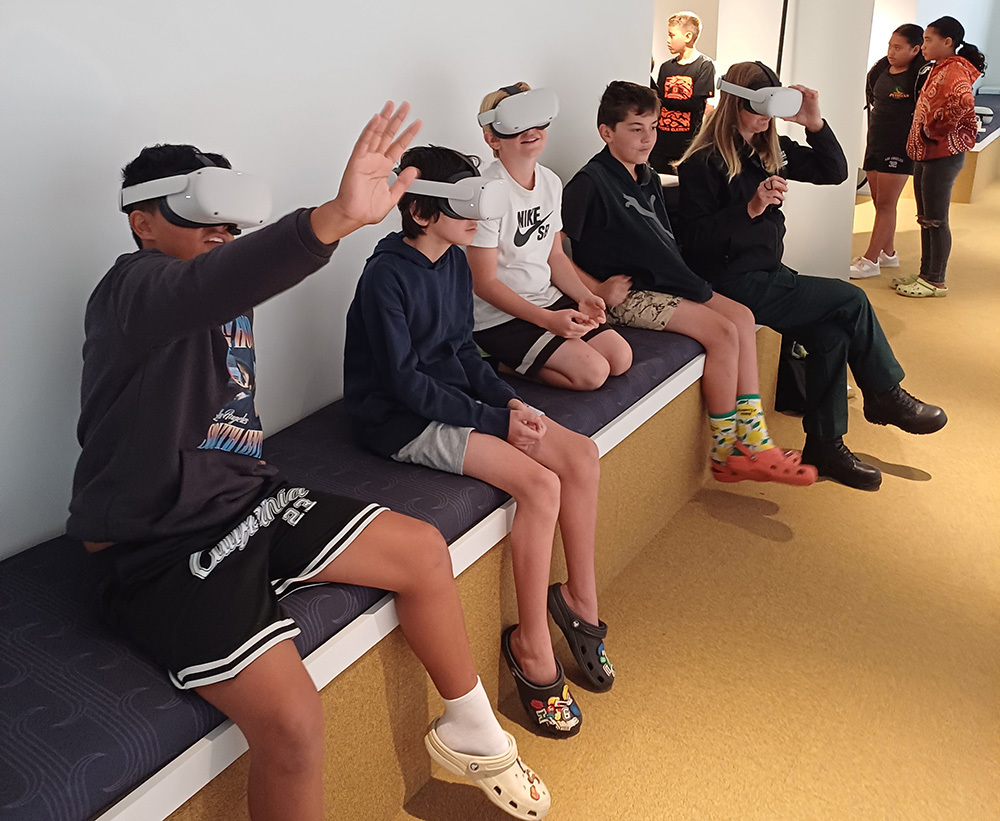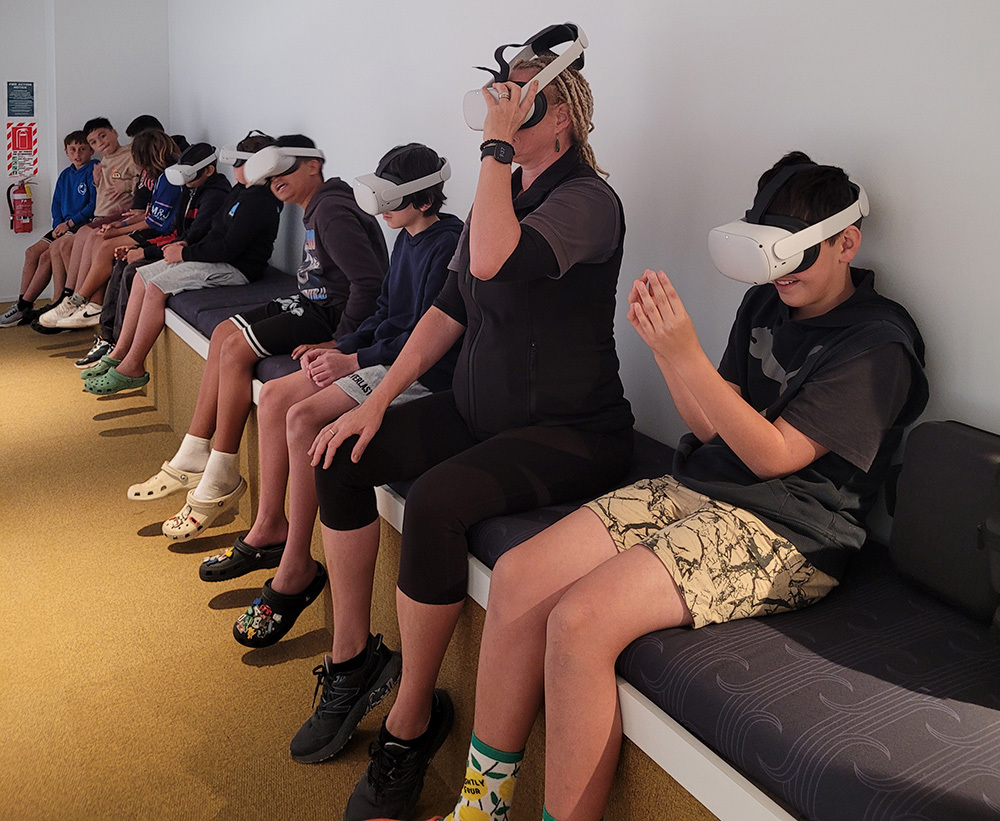Story
Students step into the virtual world to protect ancient kauri
We’re stepping into the virtual world, a virtual kauri forest to be more specific, with our virtual reality (VR) headsets and helping rangatahi discover the importance of protecting these ancient giants.
Engaging people in behaviour change initiatives can be challenging, but with the help of technology, we’re providing students the opportunity to experience the rich biodiversity of our ngahere (forests) and special taonga (treasures), while also learning how to protect them.
Earlier this month, our kauri protection team shared the excitement of VR technology with over 140 students from kura (schools) across Te Hiku at their inaugural kauri collective event, a pilot initiative between the Department of Conservation and Northland Regional Council. The VR experience, Kauri Pou Kaitiaki, immerses users in a 360-degree simulated world, highlighting the cultural, spiritual, and ecological significance of our kauri trees and forests.
We’re able to provide this incredible experience to Northlanders thanks to Waikato Regional Council, who worked with a mātauranga Māori advisory group and experts in ecology and a design agency to create the compelling visual and educational tool.
The advisory group helped to create authentic narrative rich in mātauranga and tikanga Māori concepts. In te ao Māori, kauri and whales are brothers, so the story begins under water and transports users into a mature kauri forest where the trees’ mere presence enables hundreds of other native flora and fauna to thrive. Ecologists were involved to ensure the forest was ecologically genuine, detailed with accurate associated species and creatures such as epiphytes, giant wētā and kōkaha (kauri grass).
The design agency captured all these elements in a cordless headset that blocks out daylight, so users are immersed in the story without distraction. After arriving in the kauri forest, users compete in an interactive shoe-cleaning game that reinforces why we all need to work do our bit to stop dirt and soil from spreading between forest areas.

Students exploring the virtual kauri forest.

NRC Biosecurity Officer - Kauri Protection, Candace Rameka guiding students through the virtual reality experience.
Our kauri protection team has been using VR headsets for over a year as part of their educational kete (resources) to inspire people to protect the region’s kauri trees. The reactions have been extremely encouraging. Candace Rameka, Kauri Protection Officer, says students can see firsthand how special these ancient giants are and learn how simple actions, like correctly cleaning their shoes, can help protect them. She adds that the VR experience is also captivating for young-at-heart adults, who are thrilled after spotting a kiwi or giant wētā in the forest!
Northlanders have also had the opportunity to learn about kauri thanks to an incredible scale model of a mature kauri tree created by the award-winning special effects and prop company, Wētā Workshops. This model, another initiative by Waikato Regional Council, is a 1:82 representation of the kauri that were present in the Coromandel Peninsula around 1850. It is based on a tree known as Father of the Kauri, which stood at Mill Creek, Mercury Bay. Father of the Kauri had a trunk diameter of about 7.5 metres, more than 2 metres larger than the 5.2-metre trunk diameter of Tane Mahuta, the God of the Forest, in Waipoua Forest, Northland.
The model was featured at our field day’s stand last year and was once again on display this year at the kauri collaborative site.
Candace says that having interactive and visual learning tools is crucial for explaining how the kauri root system works. “People have no idea just how far kauri roots go and the importance of giving them space to grow.”
Our kauri protection team are also utilising drone technology to identify sick trees. As technology evolves and new innovations emerge, we will continue to explore and implement these methods to help preserve kauri for future generations. Together, we can protect kauri.
